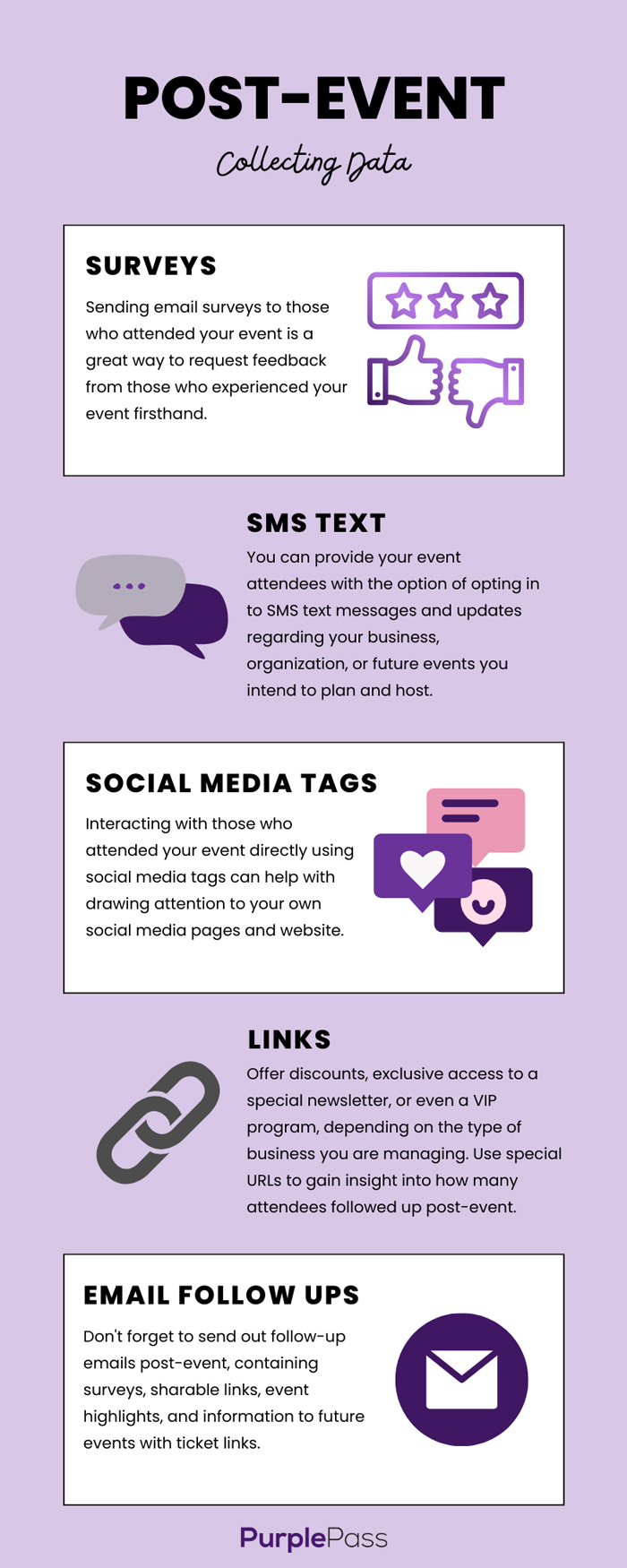16 Creative Ways to Make Your Event More Unique
In the world of event planning, creating a personalized and memorable experience for attendees is the key to success. People crave connections, and by tailoring your event to their interests, preferences, and needs, you can leave a lasting impression that sets your event apart.
In this blog, we will explore a variety of fun and creative ways to personalize your event for your attendees, making it an unforgettable and unique experience.

1. Customized Welcome Messages
Start by making your attendees feel special from the moment they arrive. Create personalized welcome messages, whether through handwritten notes at their seats, welcome signs with their names, or digital screens displaying a warm greeting.
This simple gesture sets a warm and inviting tone for the event.
2. Name Badges with a Twist
Instead of the traditional name badge, consider creating personalized name badges with unique tidbits about each attendee. Include interesting facts, hobbies, or even a fun icebreaker question. This sparks conversations and encourages attendees to connect on a personal level.
-
Fun Facts: Include interesting trivia or fun facts about each attendee. For example, "John: Traveled to 10 countries last year" or "Sarah: Can solve a Rubik's Cube in under two minutes."
-
Hobbies and Interests: Highlight an attendee's hobbies or interests. "Michael: Avid rock climber" or "Emily: Passionate about photography."
-
Favorite Books/Movies: Share attendees' favorite books or movies. "David: Loves science fiction novels" or "Laura: A big fan of classic Hollywood films."
-
Icebreaker Questions: Pose thought-provoking or lighthearted questions on the badges. Examples include "What's your go-to karaoke song?" or "If you could have dinner with anyone, living or dead, who would it be?"
-
Travel Destinations: List places attendees dream of visiting or have visited recently. "Sophia: Dreaming of exploring Japan" or "Chris: Just returned from a road trip across the U.S."
-
Spirit Animals: Assign each attendee a spirit animal and share it on their badge. "Olivia: Spirit animal - Dolphin" or "Daniel: Spirit animal - Eagle."
-
Bucket List Items: Mention one item from each attendee's bucket list. "Isabella: Wants to skydive someday" or "Noah: Aims to hike the Appalachian Trail."
-
Personal Quotes: Feature inspiring or humorous quotes chosen by attendees. "Grace: 'Adventure is out there!'" or "Ben: 'Life's a journey, not a destination.'"
3. Personalized Swag Bags
Offer attendees swag bags filled with items tailored to their preferences. Ask for input during registration to understand their likes and dislikes, and curate the bags accordingly. Include items like branded merchandise, snacks, or even personalized event-themed gifts.
4. Individualized Schedules
Allow attendees to personalize their event schedules. Provide a variety of sessions and workshops, and let attendees choose the ones that align with their interests and goals. This flexibility ensures that each attendee gets the most out of the event.
Diverse Session Offerings: Offer a diverse range of sessions, workshops, and activities that cover various topics and cater to different interests and skill levels. Ensure that your event agenda includes a mix of keynote speeches, panel discussions, interactive workshops, and networking opportunities.
Pre-Event Surveys: Prior to the event, send out surveys to registered attendees to gauge their interests and preferences. Ask them about the topics they'd like to explore, the level of expertise they possess, and any specific goals they hope to achieve during the event. Use this information to tailor the event agenda accordingly.
Time Slots and Tracks: Organize the event into different time slots and tracks based on themes or subject areas. For example, you can have tracks dedicated to marketing, technology, leadership, or industry-specific topics. Attendees can then choose sessions within these tracks that align with their interests.
Flexibility and Freedom: Emphasize the importance of flexibility in your event's messaging. Encourage attendees to create schedules that align with their needs and preferences. Highlight that they are free to switch sessions or workshops if they find something more appealing during the event.
Interactive Agendas: Create interactive, online event agendas that allow attendees to click on sessions to learn more about them. Include detailed descriptions, speaker profiles, and learning objectives to help attendees make informed decisions about which sessions to attend.
Feedback Mechanism: After the event, gather feedback from attendees about their individualized schedules. Use this feedback to improve future events, fine-tune session offerings, and refine the customization process.
5. Attendee-Centric Workshops
Incorporate attendee-driven content into your event. Allow attendees to submit topics or questions they'd like to explore during workshops or panels. This empowers them to shape the event's content and makes it highly relevant to their needs.
6. Interactive Networking Activities
Host interactive networking sessions that encourage personal connections. Icebreaker games, speed networking, and themed mixers can help attendees get to know each other better and form meaningful relationships.
Networking session ideas can include:
-
Icebreaker Games: Kick off your event with icebreaker games that encourage attendees to interact and get to know each other. Games like "Two Truths and a Lie," "Human Bingo," or "Speed Friendshipping" can help break the ice and create a relaxed atmosphere for networking.
-
Speed Networking: Organize structured speed networking sessions where attendees have a limited time to introduce themselves and exchange contact information with fellow participants. This fast-paced format is excellent for making initial connections.
-
Themed Mixers: Host themed mixers or social events that revolve around specific topics, industries, or interests. Themes could include "Tech Innovators," "Sustainability Enthusiasts," or "Creative Thinkers." Attendees can choose the mixer that aligns with their interests, making it easier to connect with like-minded individuals.
-
Roundtable Discussions: Arrange roundtable discussions on relevant and engaging topics. Each table can have a moderator or discussion leader who guides the conversation. Attendees can switch tables between sessions, allowing them to meet a variety of people and engage in meaningful discussions.
-
Collaborative Workshops: Organize workshops or group activities that require attendees to work together on a task or project. Collaborative problem-solving encourages teamwork and interaction while also providing a valuable learning experience.
-
Mobile Networking Apps: Utilize mobile event networking apps that allow attendees to create profiles, connect with each other, and schedule one-on-one meetings. These apps can facilitate networking before, during, and after the event.
-
Interactive Panels: Enhance traditional panel discussions by incorporating audience participation. Allow attendees to ask questions, vote on topics, or engage in real-time polls and surveys to make the sessions more interactive and engaging.
-
Meet the Speaker Sessions: Offer exclusive opportunities for attendees to meet with event speakers or industry experts in a smaller, more intimate setting. These sessions can include Q&A sessions, book signings, or fireside chats.
-
Gamification: Introduce gamification elements into networking activities. Attendees can earn points or prizes by participating in challenges, scavenger hunts, or trivia quizzes that require interaction with others.
-
Peer-to-Peer Mentoring: Create a platform for experienced attendees to mentor or provide guidance to newcomers or less experienced participants. Peer-to-peer mentoring sessions can foster mentorship relationships and valuable knowledge exchange.
-
Open Mic or Lightning Talks: Allow attendees to share their own insights or stories in short lightning talk sessions or open mic events. This not only provides a platform for self-expression but also encourages networking as audience members connect with speakers.
-
Structured Networking Lunches: Host structured networking lunches where attendees are assigned to tables with discussion topics or conversation starters. This ensures that everyone has the opportunity to connect over a me

7. Personalized Breakout Sessions
Divide attendees into smaller breakout sessions based on their interests or expertise. This allows for more focused discussions and learning opportunities tailored to each attendee's background and goals.
8. Live Polling and Q&A
Engage your audience by allowing them to submit questions or participate in live polls during presentations and panels. This gives attendees a voice and helps shape the direction of the event in real-time.
Popular software options for live polling:
-
Slido: Slido is a popular platform for live polling, Q&A, and audience engagement. It seamlessly integrates with presentation tools like PowerPoint and offers real-time audience interaction, allowing attendees to submit questions and vote on the most relevant ones.
-
Mentimeter: Mentimeter is a user-friendly polling and interactive presentation platform. It offers a variety of question types, including multiple-choice, open-ended, and word clouds. Attendees can participate using their smartphones or devices, and results are displayed instantly.
-
Poll Everywhere: Poll Everywhere is a versatile audience engagement tool that allows you to create live polls, surveys, and word clouds. It integrates with popular presentation software like PowerPoint and Google Slides, making it easy to engage your audience seamlessly.
-
Crowd Mics: Crowd Mics turns attendees' smartphones into microphones for Q&A sessions. It's particularly useful for in-person events, as it allows audience members to speak directly into their phones, which are then connected to the event's sound system.
-
Wooclap: Wooclap is an interactive platform designed for live polling, quizzes, and Q&A. It offers a wide range of question formats and integrates with various presentation tools. Wooclap provides detailed analytics to help you gauge audience engagement.
-
Glisser: Glisser is a comprehensive audience engagement platform that combines live polling, Q&A, and slide sharing. It allows attendees to interact with presentations in real-time and provides valuable post-event analytics.
-
Pigeonhole Live: Pigeonhole Live offers live Q&A, polls, and surveys for both physical and virtual events. It's known for its simplicity and ease of use, making it accessible to a wide range of attendees.
-
Kahoot!: While Kahoot! is popular for educational quizzes and games, it can also be used for live polling and engagement during presentations. It's a fun and interactive way to involve your audience.
-
Microsoft Teams and Zoom (Built-in Features): If you're already using Microsoft Teams or Zoom for your virtual events, both platforms offer built-in polling and Q&A features. These options are convenient for event organizers and attendees familiar with the platforms.
9. Personalized Food and Beverage Options
Consider dietary restrictions and preferences when planning your menu.
Offer a variety of food and beverage options to cater to different tastes and dietary needs. Labeling options clearly can make attendees with specific dietary requirements feel valued.
10. Personalized Entertainment
Customize the entertainment at your event to reflect the interests of your attendees. Whether it's live music, a comedy show, or a themed performance, choose entertainment that resonates with your audience.
Personalizing entertainment for your event is a fantastic way to create a memorable experience that resonates with your attendees. Here are some tips to help you achieve this:
-
Know Your Audience: Start by understanding your audience's demographics, interests, and preferences. Conduct surveys or collect data during registration to gather insights into their entertainment preferences. This information will be invaluable in tailoring the entertainment.
-
Theme and Event Goals: Consider the theme and objectives of your event. The entertainment should align with these elements to create a cohesive and immersive experience. For example, if your event is focused on sustainability, opt for eco-themed entertainment.
-
Diverse Options: Offer a variety of entertainment options to cater to different tastes within your audience. This could include live music, stand-up comedy, dance performances, or even interactive games and activities.
-
Local Talent: Showcase local talent whenever possible. Local artists, musicians, and performers not only add a unique flavor to your event but also support the local community.
-
Interactive Entertainment: Consider interactive entertainment options that allow attendees to actively participate. This could be a hands-on art installation, a trivia game, or a workshop where attendees can learn a new skill.
-
Surprise and Delight: Add an element of surprise to your entertainment. Unexpected performances or activities can be a delightful and memorable part of the event. Just ensure that the surprise aligns with the overall event theme.
-
Customization: Work closely with the entertainment providers to tailor their act or performance to your event's unique requirements. For example, a musician could perform songs related to your industry or event theme.
-
Timing and Flow: Consider the timing and flow of entertainment throughout the event. Use entertainment strategically to break up long sessions, transition between different segments, or energize the audience during lulls.
-
Engage Attendees: Encourage attendee participation during entertainment segments. This could include audience interaction, Q&A sessions with performers, or inviting volunteers on stage for certain activities.
-
Safety and Accessibility: Ensure that the chosen entertainment options are safe and accessible to all attendees, including those with disabilities. Consider any potential cultural or sensitivity issues that may arise.
11. Personalized Photo Booths
Set up photo booths with props and backgrounds that attendees can personalize. Encourage them to capture fun and memorable moments that reflect their personalities.
12. Thank-You Cards
Show your appreciation with personalized thank-you cards or emails after the event. Include a personal message that acknowledges their attendance and participation. This thoughtful gesture leaves a positive impression and encourages future engagement.
13. Post-Event Surveys
Collect feedback from attendees through post-event surveys. Use the feedback to improve future events and show attendees that their opinions matter.
Tips for Effective Post-Event Surveys:
-
Timing: Send the survey shortly after the event concludes while the experience is still fresh in attendees' minds. Waiting too long may lead to incomplete or less accurate responses.
-
Clear Objectives: Define clear objectives and goals for your survey. What specific information are you seeking to collect? Understanding your survey's purpose helps in crafting relevant questions.
-
Question Design: Create well-crafted questions that are concise, specific, and easy to understand. Use a mix of closed-ended (multiple-choice) and open-ended questions to capture both quantitative and qualitative data.
-
Rating Scales: Utilize rating scales (e.g., Likert scales) for questions that require attendees to rate aspects of the event, such as satisfaction levels. This provides structured, numerical data for analysis.
-
Open-Ended Questions: Encourage attendees to provide detailed feedback through open-ended questions. These responses often yield valuable insights and suggestions for improvement.
-
Anonymity: Assure attendees that their responses will remain anonymous if they prefer. This can lead to more honest and candid feedback.
-
Short and Focused: Keep the survey concise to avoid overwhelming respondents. A well-structured survey should take no more than 5-10 minutes to complete.
-
Multiple Channels: Distribute the survey through various channels, such as email, social media, or event apps. Make it easy for attendees to access and respond to the survey.
-
Incentives: Consider offering incentives, such as discounts for future events or a chance to win prizes, to boost survey participation rates.
-
Data Analysis: Once you collect survey responses, analyze the data carefully. Look for trends, common themes, and areas of consensus. Identify areas for improvement and prioritize them based on attendee feedback.
-
Action Plan: Develop an action plan based on the survey findings. Share this plan with your team and outline specific steps to address attendee concerns and implement suggested improvements.
-
Feedback Loop: Communicate the survey results and your action plan to attendees. This transparency demonstrates that you take their feedback seriously and are committed to making positive changes.
-
Iterate and Repeat: Use the feedback to iterate and refine your event planning process for future gatherings. Continuously seek opportunities to enhance the attendee experience.
14. Personalized Digital Experiences
Leverage event apps and platforms that allow attendees to personalize their digital experience. Features like customized schedules, session recommendations, and personalized content suggestions enhance their event journey.
15. Personalized Follow-Up
After the event, continue personalizing your engagement. Send follow-up emails or messages that reference specific sessions or discussions attendees participated in. This shows that you value their individual contributions.

16. Attendee Testimonials
Highlight attendee testimonials and success stories from your event in your marketing materials. Sharing their experiences can inspire others to attend future events and feel connected to your community.
Effective Incorporation of Attendee Testimonials:
-
Collect Diverse Testimonials: Seek testimonials from a diverse range of attendees, including those with varying levels of experience, backgrounds, and roles. This diversity helps appeal to a broader audience.
-
Video Testimonials: Video testimonials are highly engaging and authentic. Encourage attendees to record short video testimonials sharing their event experiences, takeaways, and the impact on their professional or personal lives.
-
Written Testimonials: Alongside video testimonials, gather written testimonials that provide concise, impactful quotes. These can be used in marketing materials, social media, and on your event website.
-
Case Studies: Develop in-depth case studies featuring the success stories of specific attendees or companies that have benefited significantly from your events. Include quantitative data and qualitative insights to illustrate the value of your events.
-
Attribution and Photos: Always attribute testimonials to their sources, including the attendee's name, title, organization, and a profile photo if possible. Visualizing the person behind the testimonial adds authenticity.
-
Use Across Channels: Incorporate testimonials into various marketing channels, including event websites, promotional emails, social media posts, brochures, and event registration pages. Consistency in messaging is key.
-
Highlight Transformation: Emphasize how attending your event led to positive transformations in attendees' personal or professional lives. Whether it's a career boost, new skills, or a profound impact, focus on the outcomes.
-
Permission and Consent: Always obtain attendees' permission and consent to use their testimonials in your marketing materials, ensuring compliance with data protection regulations.
Make Every Attendee Feel Special
Incorporating personalization into your event planning isn't just a nice touch; it's a powerful way to create meaningful connections and memorable experiences for your attendees. Whether through customized greetings, personalized content, or tailored networking opportunities, the effort you put into personalization will not go unnoticed.
By making every attendee feel special, you'll not only create a unique and unforgettable event but also build a loyal and engaged community that keeps coming back for more.






